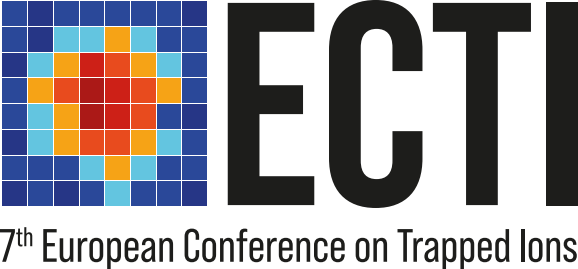Speaker
Description
Matter-wave interferometers typically exploit entanglement between the internal state and the motional state of matter. A laser-cooled and trapped ion makes a good platform to realize inertial sensing because of the precise controllability of quantum states and its isolated conditions. The UCLA group recently proposed a remarkable scheme to realize rotation sensing using a single ion [1]. In their idea, rotation sensing is achieved by putting an ion into a superposition of two oppositely rotating states and measuring the rotational phase shift in the interference signal. The sensitivity to rotation is proportional to the interference area, so it is important to generate large ion orbits for the actual application.
One of the methods to drastically increase an interference area is to apply a pulse voltage to the trap electrodes, causing a displacement of the trap center in a short time scale [2]. However, this scheme utilizes a risky situation in that an ion in a large orbit is exposed to a relatively large RF electric field in contrast to an ion in a conventional precisely-compensated condition. The heating of an ion would destroy the purity of the quantum states, leading to a degradation of the interference signal. To investigate the feasibility of rotation sensing using a trapped single ion, it is essential to fully characterize the heating properties of an ion under the ultrafast trap center displacement.
A single $^{171}\mathrm{Yb}^+$ ion in a linear Paul trap is cooled down to a vibrational grand state using a conventional sideband cooling scheme. Once the ion is cooled, a pulse voltage is applied to one of the trap electrodes, and the trap center is rapidly displaced. We measure the heating of an ion motion by measuring the motional state of an ion after the trap center displacement.
As a result, significant heating has been observed due to the fast displacement of the trap center. Furthermore, the heating of an ion shows non-linear dependence on the time duration of the ion in the large orbit. Understanding how the heating gets severer in our system in time is essential because this property may limit the interference time that we take for the rotation sensing.
In this poster presentation, we report on the details of the measurement scheme and the results of the ion heating in a large ion orbit.
[1]. W. C. Campbell and P. Hamilton, J. Phys. B 50, 064002 (2017)
[2]. Ryoichi Saito and Takashi Mukaiyama Phys. Rev. A 104, 053114(2021)

